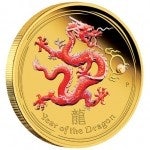Jing Daily’s Top Posts for the Week
In case you missed them the first time around, here are some of Jing Daily’s top posts for the week of November 14-18.

More Luxury Brands Rolling Dice With Hong Kong IPOs, But Who’ll Benefit Most?
Despite an IPO environment described by the BBC this summer as “faltering,” nearly six months after debuts by the likes of Samsonite and Prada, it seems that high-end brands are still lining up to list on the Hong Kong stock exchange. Following a nearly year-long tear of IPOs that saw brands like L’Occitane and the Chinese cosmetics powerhouse SaSa International successfully list in Hong Kong, CLSA Asia Pacific Markets regional head of consumer research, Aaron Fischer said this past February that Hong Kong-listed retailers are best positioned to capture the mainland’s demand for high-end merchandise. Pointing out examples such as Emperor Watch & Jewellery, SaSa and L’Occitane, and the department store operator Parkson Retail, Fischer said Hong Kong-listed companies are likely to benefit greatly from growing spending power in the Chinese mainland, since “a greater percentage of their earnings are derived from Chinese customers.”
However, after a string of disappointing debuts in Hong Kong, crimped by investor concerns about inflation, Josef Schuster of Chicago- based IPOX Schuster LLC, told Bloomberg in June that “Companies considering a Hong Kong listing are now in the wait-and-see mode.”

Jing Daily “Year Of The Dragon” Gift Guide: From Blowout To Budget
Designed at the Home of Rolls-Royce in Goodwood, West Sussex by the automaker’s bespoke team, Rolls-Royce’s Year of the Dragon collection is, all things considered, surprisingly understated. One of the only features actually visible on the exterior are two forward-facing dragons hand-painted dragons on the side of each Phantom or Phantom Extended Wheelbase. In the interior, though, dragon iconography proliferates, from hand-embroidered, four-color (tan, golden sand, black and white) accents hand-embroidered on each headrest to a hand-laid dragon inlay in the passenger panel and special tread-plates with “Year of the Dragon 2012″ illuminated by LED lighting.
Reflecting a good dose of insight into the buying habits of wealthy Chinese, Rolls-Royce is offering buyers a choice between modern or traditional marquetry, either of which is laser-cut at the Home of Rolls-Royce and hand-assembled.

Will France-Bound Chinese “Wine Tourists” Only Benefit Bordeaux?
With the tastes of Chinese wine consumers, particularly younger and female drinkers, becoming significantly more diverse — even at the high-end, where top Burgundy is starting to displace long dominant Bordeaux vintages — can we expect Chinese wine tourists in France to continue to home in on Bordeaux, or will other regions prove attractive as well? Much of this depends on the way these tourists travel. Taking part in tour groups, older travelers and those with families, or starry-eyed tourists drawn to France because of films like “Eternal Moment” (将爱), will likely stick to Bordeaux.
However, other wine-growing regions in France are hopeful that independent travelers, sophisticated wine enthusiasts, and France-based Chinese students and professionals will prove a little more adventurous. This demographic presents huge potential opportunities for winemakers in Champagne, Alsace, Languedoc, Burgundy and the Loire Valley, regions long famous for quality wine but only recently becoming better known in China.

Shanghai To Transform China Pavilion Into Art “Palace”
Shanghai may be known as a city obsessed with the pursuit of money, but in recent years China’s most populous metropolis has busied itself with another obsession: rivaling Beijing as a cultural and artistic hub. As Jing Daily noted this past May, while Beijing still enjoys its status as China’s cultural and political capital, the city’s rampant growth over the past decade has cannibalized many of its vibrant arts districts and threatened many others, alienating the creative community and, in some cases, pushing artists to relocate.
This shift in Beijing, and Shanghai’s well-capitalized initiative to foster a more creative environment in the city, has invigorated Shanghai’s cultural ambitions. Over the last few years, new creative/lifestyle venues like 1933 (a restored Jazz Age abattoir), the Shanghai Songjiang Creative Studio, and the Rockbund Art Museum have opened their doors. Though red tape and fly-by-night private gallery owners continue to plague the industry, by 2015, Shanghai plans to open 16 more large-scale museums and galleries.

Penfolds Chooses Shanghai For First Bin 620 Release In Nearly 50 Years
With China becoming an increasingly critical market for Australian winemakers, who are hoping to chip away at the dominance of France in China’s imported wine market, overtures from wineries down under are becoming increasingly bold. Today, for the first time in the winery’s 167-year history, Penfolds launched one of its rare Special Bin wines outside of Australia, choosing Shanghai’s Waldorf Astoria to debut its Bin 620 Coonawarra Cabernet Shiraz 2008.
As Penfolds chief winemaker Peter Gago said of the launch of Bin 620 this week, “This signifies the importance of China to Penfolds.” Beyond that, we’d say the gesture underlines the importance of China to Australian wine in general. According to WineBiz, China is currently Australia’s fourth-largest wine export market, with Aussie winemakers shipping some 55 million liters of wine to thirsty Chinese drinkers in 2010, a 36 percent rise over 2009. As the Wall Street Journal recently noted, Australia already has 20 percent market share of the Chinese imported wine market, trailing only France (40 percent), and currently, China is Australia’s largest market for wines that are sold at over US$10. Look for the popularity of Australian wine to continue growing in China, particularly among “new” middle-class drinkers.